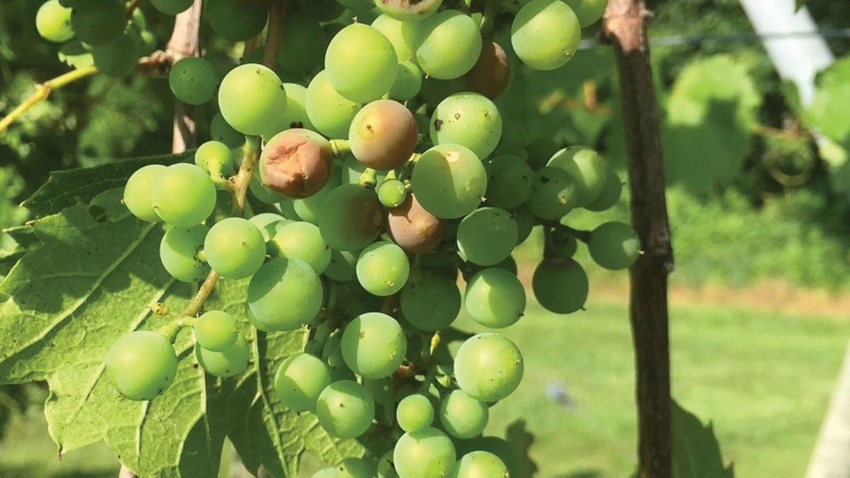
Only a bit short of what you'd call “tongue-in-cheek understatement,” Cliff Yu, professor of viticulture and enology at California State University, Fresno, acknowleded, “It’s always hot and sunny in California.”
And while that may be an attraction for those who live or visit the Golden State, it can also represent a recurring disorder — sunburn in grapevine berries — that results in a decline in berry quality as well as a reduction in yield.
Writing in Frontiers in Plant Science magazine on the subject, Yu admits the vine sunburn process is more complex than just sun-meets-berries.
“In recent years, summers have been similar with an unpredictable, a curve ball for grape growers. Like last year when an August heat wave popped up and table grape growers had to rush to harvest and wrap up their season earlier than they expected.”
But the hot, sunny, heatwaves — be they on the coast or in the Central Valley — can be detrimental to all growers. They may not have to ramp up harvest times, but they have to add in sunburn issues like quality degradation and yield loss in addition to the higher temperatures and drier conditions linked to wildfires, smoke taint, a need for increased irrigation, and the like.
Yu defines a “heat wave” as “an abnormally high temperature” and explained: “Last year, while Central Valley is usually hot with readings of 95-100 all summer long, the 2022 heat wave posted temperatures in the 115-117 range. In cooler Coastal regions like Napa/Sonoma, some readings approached the 110+ degree mark.
“And I think it’s going to be another hotter year this time around,” he said. “We’re anticipating the possibility of more frequent heat waves which will mean growers will have to manage their canopies more closely to avoid some of the berry sunburn problems.”
Plan of action
Citing “an urgent need to adapt mitigation strategies for vineyards,” Yu advised a plan of action for canopy interaction with the environment. Like the timing and extent of the management practice of leaf removal to reduce disease prevalence and modify grape composition by opening up the canopy.
“While early bunch zone leaf removal allows berries to adapt to changing sunlight, removal adjacent to a heat wave can dramatically increase sunburn occurrence,” he writes “Expecting more heat waves due to climate change, this would shorten and reduce the time window for leaf removal.”
Part of the problem involves the growing region. “Coastal wine grape growers tend to expose their clusters to more solar radiation because they have more cloudy days, while Central California growers try to maximize their yield with big canopies under a lot of shade because it’s always hot there.”
Where too much can be a negative, “Try to shape and cover clusters with nets or shade film to protect the fruit,” Yu advised. “If growers can manipulate their layouts, take into account the orientation of the really hot afternoon solar exposure.”
With climate change becoming less of a catch phrase and more of a reality, Yu said: “We definitely need to change some of the things we do right now just to cope with the existing drought and heat waves. Growers are experiencing sunburn issues and damage because of the continuing use of older farming practices.
“One thing we can do is change some long-time management techniques to reflect changing growing patterns. We can use some of the newer hot-climate heat-resistant varieties and implement new tool use that can predict temperature fluctuations and how to respond to manage vine conditions that will prevent damage before it happens.”
About the Author(s)
You May Also Like




